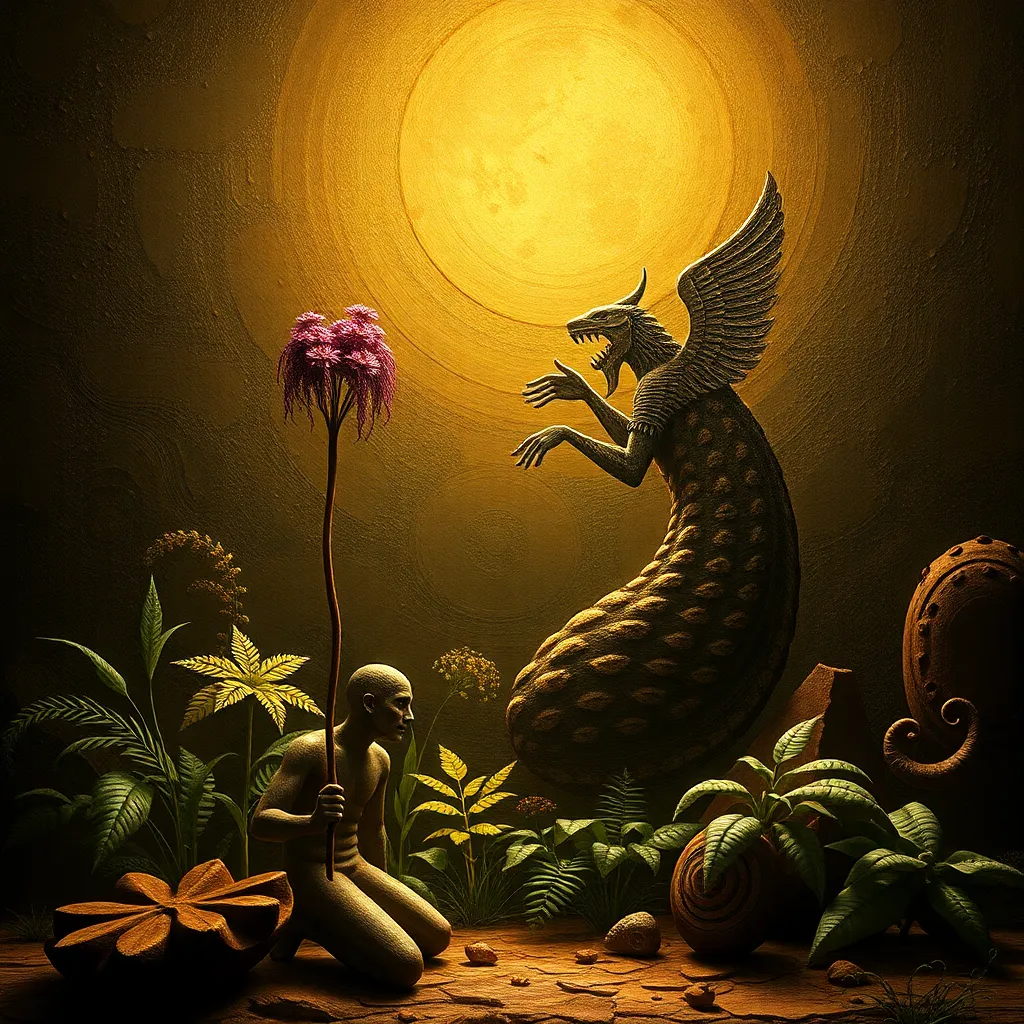The Role of Plants in Egyptian Mythological Texts
I. Introduction
Egyptian mythology is a rich tapestry of stories, beliefs, and symbols that reflect the profound relationship the ancient Egyptians had with their environment. Among the many elements that filled their narratives, plants played a crucial role, serving not only as resources for daily life but also as potent symbols in their mythology and religion.
In ancient Egyptian culture, plants were more than mere flora; they were intertwined with spirituality, creation, and the cycles of life and death. This article explores the multifaceted significance of plants in Egyptian mythology, highlighting their symbolic meanings, sacred associations, and roles in both life and the afterlife.
II. Symbolism of Plants in Egyptian Mythology
Plants in Egyptian mythology often carried deep meanings and were integral to various myths and rituals. The symbolism of flora can be categorized as follows:
- Common plants and their meanings: Different plants represented various concepts. For instance, the lotus symbolized purity and rebirth, while the papyrus was associated with the Nile and knowledge.
- The significance of flora in creation myths: Many creation stories involved plants, notably the lotus, which was believed to have emerged from the primordial waters, signifying the birth of the sun and creation itself.
- Plants as symbols of life, death, and rebirth: Flora symbolized the cyclical nature of existence, with many plants having seasonal cycles that reflected life, death, and rebirth themes.
III. Sacred Plants in Egyptian Religion
Several plants held sacred status in ancient Egyptian religion, revered for their spiritual significance and associations with deities:
- The lotus: The blue lotus (Nymphaea caerulea) was a powerful symbol of creation, rebirth, and the sun. It blossomed in the morning and closed at night, mirroring the cycle of life.
- The papyrus plant: Associated with the Nile, papyrus symbolized life, fertility, and knowledge. It was used to create paper, which was essential for recording religious texts.
- Other notable sacred plants:
- Sycamore: Symbolized protection and nourishment, often associated with the goddess Hathor.
- Acacia: Represented immortality and was often linked to the afterlife.
IV. Plants in the Afterlife and Funerary Practices
Plants played a significant role in the afterlife beliefs and funerary practices of ancient Egyptians:
- Role of plants in burial rituals: Various plants were used in mummification processes and burial rites, believed to assist the deceased in their journey to the afterlife.
- Use of botanical imagery in tomb art and inscriptions: Tombs were adorned with depictions of sacred plants, which symbolized rebirth and eternal life.
- The significance of offerings and their plant components: Offerings at tombs often included bread and other plant-based items, which were believed to nourish the spirit of the deceased in the afterlife.
V. Deities and Their Associations with Plants
Several deities in Egyptian mythology were closely associated with specific plants:
- Osiris: The god of agriculture and the afterlife, Osiris was often depicted with grain, symbolizing growth, fertility, and resurrection.
- Hathor: The goddess of love and joy, Hathor was associated with the sycamore tree, which was considered sacred and a source of nourishment.
- The role of plant deities in mythological narratives: Other deities, such as the goddess Isis, were linked to various plants that represented healing and protection.
VI. Mythological Texts and Botanical Descriptions
Key mythological texts, such as the Pyramid Texts and the Book of the Dead, often contained botanical references:
- Analysis of key texts: These texts illustrate the importance of plants in the spiritual beliefs of ancient Egyptians, detailing how flora contributed to the symbolism of life and death.
- Botanical references and their interpretations: Descriptions of plants in these texts offered insights into their significance and the belief systems surrounding them.
- The interplay between myth and nature in these texts: The use of botanical imagery in mythology reflects the deep connection between the natural world and the spiritual beliefs of the ancient Egyptians.
VII. Modern Interpretations and Their Impact
Contemporary scholarship continues to explore the role of plants in Egyptian mythology:
- How contemporary scholars view the role of plants in mythology: Modern researchers analyze ancient texts and archaeological findings to understand the significance of plants in Egyptian culture.
- The influence of Egyptian botanical symbolism in modern culture: Elements of Egyptian plant symbolism can still be seen in art, literature, and even popular culture today.
- Preservation of ancient knowledge related to plants: Efforts to preserve and study ancient botanical knowledge contribute to a greater understanding of the environment and its importance to ancient civilizations.
VIII. Conclusion
In summary, plants played a vital role in Egyptian mythology, serving as symbols of creation, life, and the afterlife. Their significance extended beyond the physical realm, intertwining with the spiritual beliefs and practices of the ancient Egyptians.
The enduring legacy of these beliefs continues to inspire modern study and appreciation of the intricate relationship between botany and mythology in ancient cultures. As we delve deeper into this fascinating intersection, we uncover the rich tapestry of beliefs that shaped the lives of one of history’s most remarkable civilizations.




